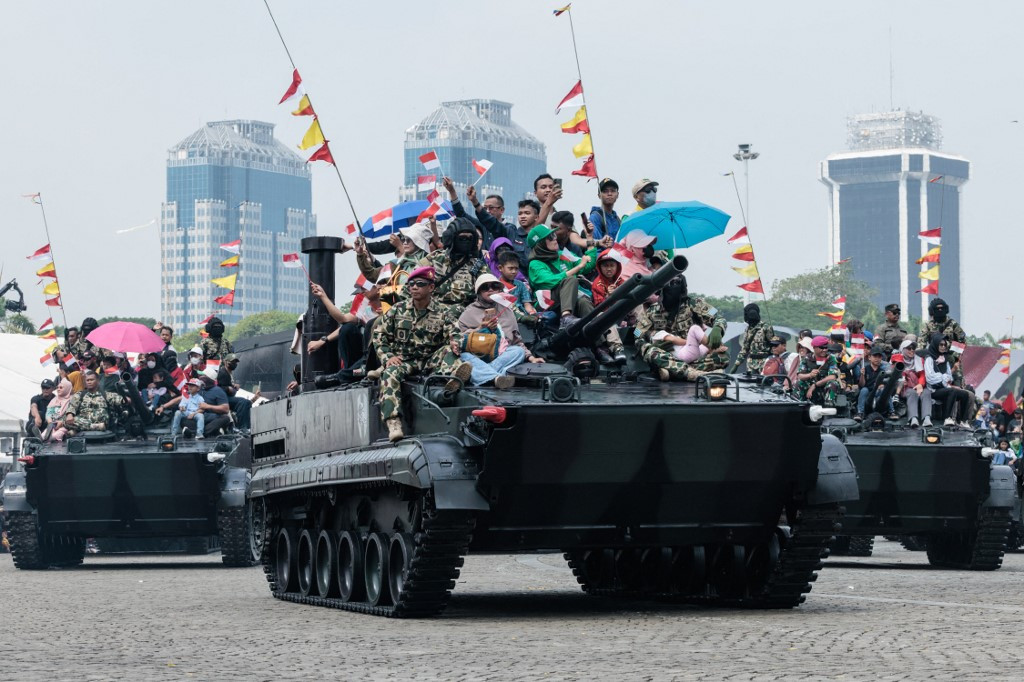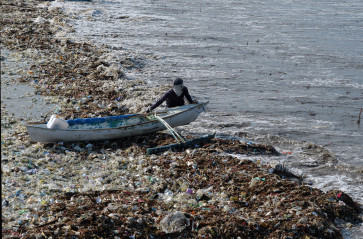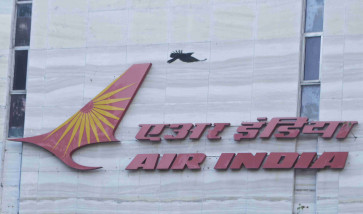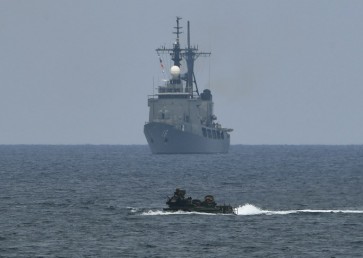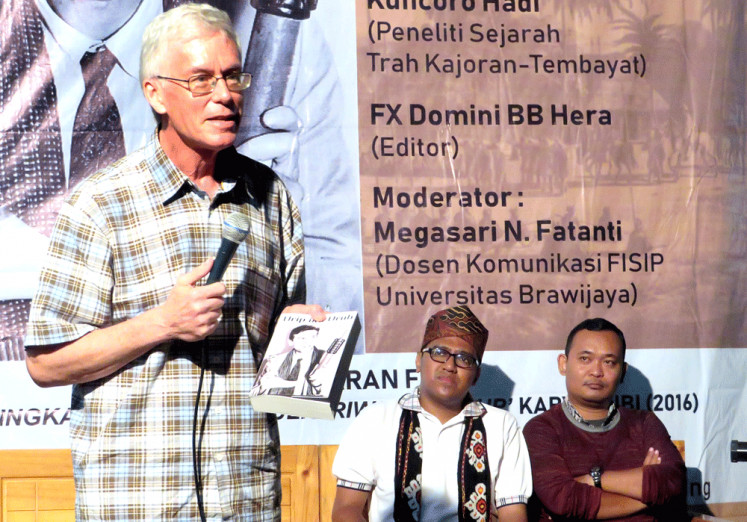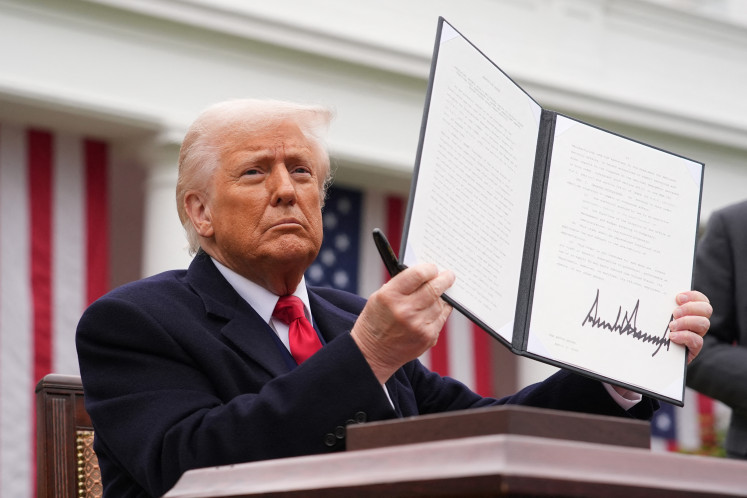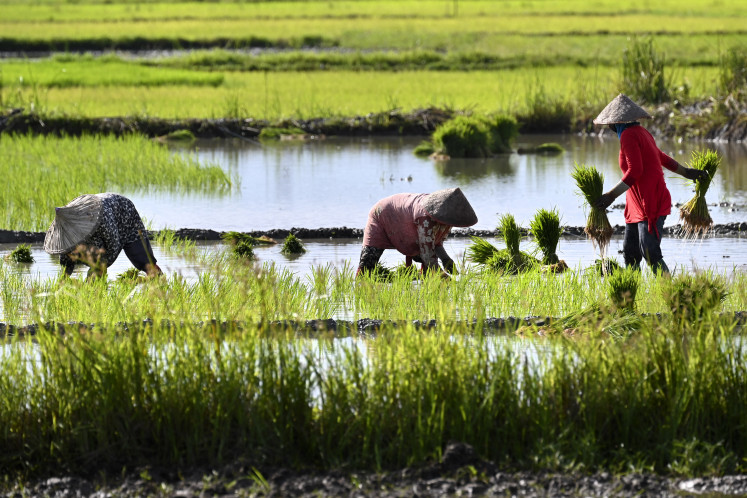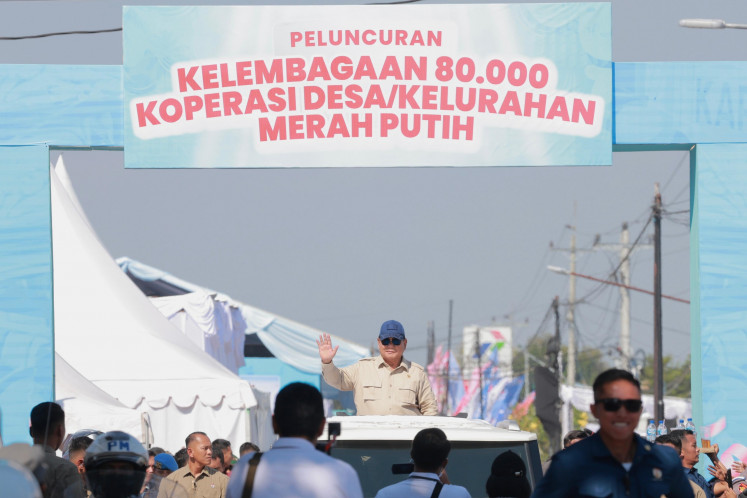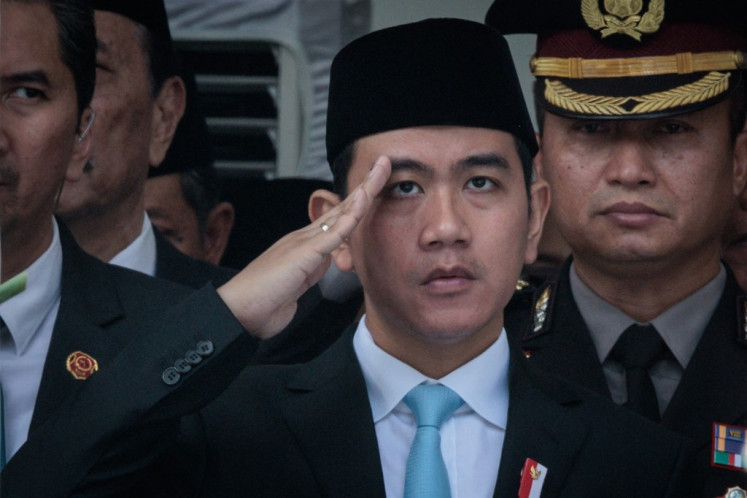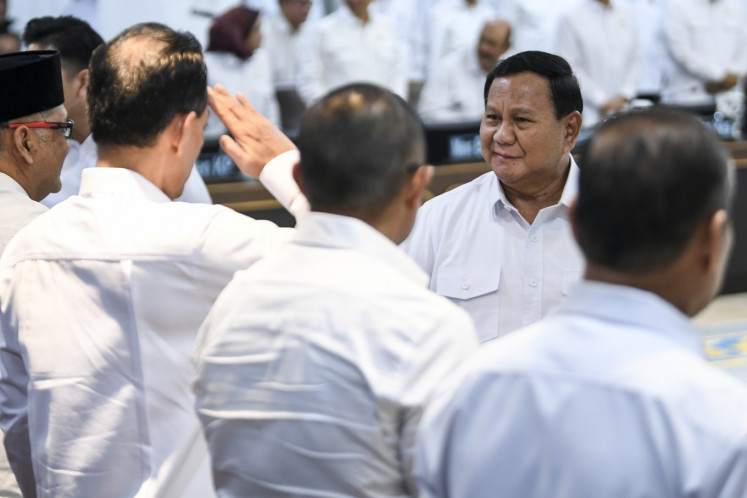Popular Reads
Top Results
Can't find what you're looking for?
View all search resultsPopular Reads
Top Results
Can't find what you're looking for?
View all search resultsIndonesia is out of step with global arms race
In a world rearming rapidly amid rising geopolitical tensions, Indonesia’s restrained defense spending and fragmented military modernization efforts raise questions about its readiness.
Change text size
Gift Premium Articles
to Anyone
I
n recent years, Indonesia has seen a nominal increase in its defense budget, but the rise is negligible in a context that is seeing the start of a new global arms race.
In 2023, Indonesia’s defense budget was US$8.8 billion, rising nominally to $10.6 billion in 2025. However, the percentage of gross domestic product (GDP) allocated to defense is stagnant. Calculated based on the report, the 2023 budget was 0.7 percent of GDP, increasing by only 0.07 percentage points to 0.77 percent in 2025.
This figure remains behind that of other United States allies and partner countries in East Asian and Southeast Asian countries, which average 1.85 percent of their GDP.
Indonesia’s GDP has increased from Rp 20.9 quadrillion (US$1.37 trillion) in 2023 to Rp 24.2 quadrillion in 2025. The nominal increase in the defense budget can be seen as a response to GDP growth rather than as a commitment to prioritizing the defense sector in the context of the global arms race.
Although Indonesia plans to raise its defense budget to 1.5 percent of GDP in the future, questions remain about its commitment to defense modernization. According to the 2025 defense budget, most of the allocation, 51 percent, is for personnel and management support. Modernization and procurement account for only 40 percent of the budget.
The new Indonesian Military (TNI) Law grants the armed forces a broader scope for non-military operations within the country, such as food security efforts. This creates a greater demand for budgetary support for management and additional personnel. Such resource allocation could potentially limit Indonesia’s ability to contribute to regional stability and security.
The recent procurement of French Rafale and Turkish Kaan fighter aircraft, and interest in procuring Chinese J-10 fighters and Russian SU-35, cannot be viewed as a firm commitment to modernization or participation in the global arms race.
Instead, it reflects the fallout from the failure of the Minimum Essential Forces (MEF) program to meet its 2024 targets. Indonesia’s military equipment is currently insufficient in quantity and aging in quality, leaving the government with significant gaps to address in securing national territory.
The wide variation in weapons procurement from multiple countries further highlights focus on bridging quantitative shortfalls, rather than following a comprehensive grand strategy that considers tactical aspects such as interoperability and a capability-based defense system.
The acquisitions are not driven by a desire for the most advanced systems, but rather by market availability. Political considerations continue to outweigh strategic military factors, as Indonesia remains intent on avoiding dependency in its weapons procurement.
During the Shangri-La Dialogue, US Secretary of Defense Pete Hegseth said that US partners and allies in the Indo-Pacific region should increase military spending to counterbalance China’s growing threat.
Recent years have seen increased defense spending across Asia.
In East Asia alone, military expenditure surged by 7.8 percent in 2024, marking the highest growth since 2009. Japan raised its defense budget by 21 percent, reaching 1.4 percent of GDP. Singapore allocated 2.8 percent of its GDP to defense.
Global military spending rose to $2.7 trillion in 2024, the highest level since the end of the Cold War. This rise in defense spending is particularly concerning given the deteriorating global economic situation.
After weathering the global pandemic, the world economy now faces considerable uncertainty. Global production has yet to fully recover, and economies are becoming increasingly protectionist.
Trump’s reciprocal tariff policy has resulted in disruption to global supply chains and production, impacting global economic growth. These economic realities offer no “bonus” to justify recent increases in defense spending.
The true driver of this trend is geopolitical risk. In recent years, the world has witnessed four major conflicts: Russia-Ukraine, Israel-Hamas, Israel-Iran and India-Pakistan.
Geopolitical risks are very real for Indonesia. The country has overlapping claims with China in the South China Sea, and any escalation in the Taiwan Strait or on the Korean Peninsula would directly impact Indonesia.
However, Indonesia’s recent defense modernization efforts cannot be said to provide a strong deterrent effect.
They fall short of addressing the country’s security threats and are far from meeting US expectations for increased defense spending. It can be concluded that Indonesia’s current military modernization efforts do not align with the global arms race underway today.
---
The writer is an assistant professor of international relations at Parahyangan Catholic University. The article is published under a Creative Commons license.

